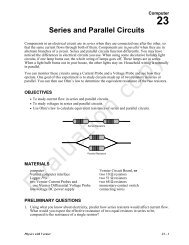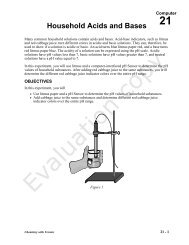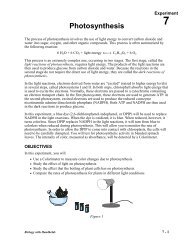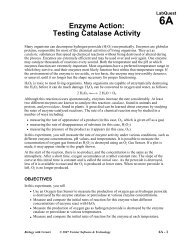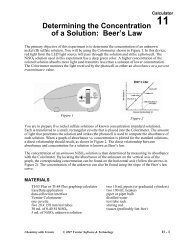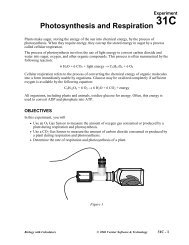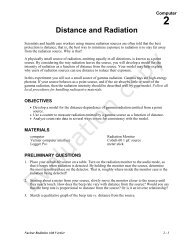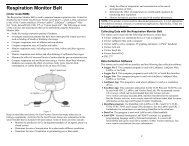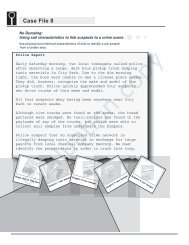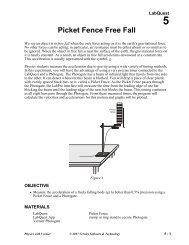Activities for the Wireless Dynamics Sensor System - Vernier ...
Activities for the Wireless Dynamics Sensor System - Vernier ...
Activities for the Wireless Dynamics Sensor System - Vernier ...
You also want an ePaper? Increase the reach of your titles
YUMPU automatically turns print PDFs into web optimized ePapers that Google loves.
<strong>Activities</strong> <strong>for</strong> <strong>the</strong> <strong>Wireless</strong> <strong>Dynamics</strong> <strong>Sensor</strong> <strong>System</strong>Radius (m)Angular Speed(rpm)33⅓4578Time <strong>for</strong> one Revolution(s)Theoretical CentripetalAcceleration(m/s 2 )QUESTIONS1. What are <strong>the</strong> average values of <strong>the</strong> x-axis acceleration <strong>for</strong> each speed of rotation?Record <strong>the</strong>se values in <strong>the</strong> table provided.2. For each angular speed, calculate <strong>the</strong> time <strong>for</strong> one revolution in seconds.3. Calculate <strong>the</strong> centripetal accelerations expected with each of <strong>the</strong> turntable speeds.How do <strong>the</strong>se values compare to <strong>the</strong> average accelerations you measured?4. In terms of <strong>the</strong> g-factor, what is <strong>the</strong> greatest g-factor achieved in this activity? (Note:a centripetal acceleration of +9.8 m/s 2 is equivalent to +1g.)5. How might you increase <strong>the</strong> maximum g-factor on this turntable without increasingits angular speed?© 2007 - <strong>Vernier</strong> Software & Technology 11




